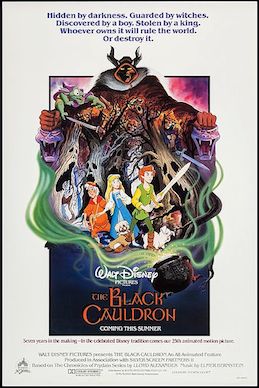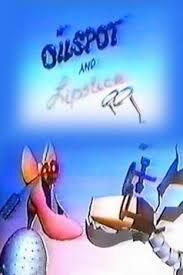Related Research Articles

Animation is the method that encompasses myriad filmmaking techniques, by which still images are manipulated to create moving images. In traditional animation, images are drawn or painted by hand on transparent celluloid sheets (cels) to be photographed and exhibited on film. Animation has been recognized as an artistic medium, specifically within the entertainment industry. Many animations are computer animations made with computer-generated imagery (CGI). Stop motion animation, in particular claymation, has continued to exist alongside these other forms.
Modern animation in the United States from 1987 to 2004 is referred to as the renaissance age or Silver Age of American animation. During this period, many large American entertainment companies reformed and reinvigorated their animation departments, following a dark age during the 1970s to mid 1980s. During this time the United States had a profound effect on global or worldwide animation.

The Walt Disney Studios, located in Burbank, California, United States, serves as the corporate headquarters for The Walt Disney Company media conglomerate. The 51-acre studio lot also contains several sound stages, a backlot, and other filmmaking production facilities for Walt Disney Studios's motion picture production. The complex also houses the offices for the company's many divisions, with the exception of Pixar Animation Studios, Lucasfilm, and 20th Century Studios, which remains on its namesake lot in nearby Century City.

The Great Mouse Detective is a 1986 American animated mystery adventure film produced by Walt Disney Feature Animation and released by Walt Disney Pictures. It is based on the children's book series Basil of Baker Street by Eve Titus and Paul Galdone, and was written and directed by John Musker, Dave Michener, Ron Clements, and Burny Mattinson in their feature directorial debuts. Featuring the voices of Vincent Price, Barrie Ingham, Val Bettin, Susanne Pollatschek, Candy Candido, Diana Chesney, Eve Brenner, and Alan Young, the film's plot follows Basil of Baker Street, a mouse detective who undertakes to help the young mouse Olivia find and save her father from the criminal mastermind and Basil's sworn enemy, Professor Ratigan.
Visual effects is the process by which imagery is created or manipulated outside the context of a live-action shot in filmmaking and video production. The integration of live-action footage and other live-action footage or CGI elements to create realistic imagery is called VFX.

Traditional animation is an animation technique in which each frame is drawn by hand. The technique was the dominant form of animation in cinema until the end of the 20th century, when there was a shift to computer animation in the industry, specifically 3D computer animation.

Jeffrey Katzenberg is an American film producer and media proprietor. He became well known for his tenure as chairman of Walt Disney Studios from 1984 to 1994. After departing Disney, he was a co-founder and CEO of DreamWorks Animation, where he oversaw the production of such animated franchises as Shrek, Madagascar, Kung Fu Panda, and How to Train Your Dragon. He has since founded a new media and technology company called WndrCo and was the founder of Quibi, a defunct short-form mobile video platform which lost $1.35 billion in seven months.

The Black Cauldron is a 1985 American animated dark fantasy adventure film produced by Walt Disney Productions in association with Silver Screen Partners II and released by Walt Disney Pictures. It is loosely based on the first two books in The Chronicles of Prydain by Lloyd Alexander, a series of five novels that are in turn based on Welsh mythology.
A cel, short for celluloid, is a transparent sheet on which objects are drawn or painted for traditional, hand-drawn animation. Actual celluloid was used during the first half of the 20th century, but since it was flammable and dimensionally unstable it was largely replaced by cellulose acetate. With the advent of computer-assisted animation production, the use of cels has been all but abandoned in major productions. Disney studios stopped using cels in 1990 when Computer Animation Production System (CAPS) replaced this element in their animation process, and in the next decade and a half, the other major animation studios phased cels out as well.

Walt Disney Animation Studios (WDAS), sometimes shortened to Disney Animation, is an American animation studio that creates animated features and short films for The Walt Disney Company. The studio's current production logo features a scene from its first synchronized sound cartoon, Steamboat Willie (1928). Founded on October 16, 1923, by brothers Walt and Roy O. Disney, it is the oldest-running animation studio in the world. It is currently organized as a division of Walt Disney Studios and is headquartered at the Roy E. Disney Animation Building at the Walt Disney Studios lot in Burbank, California. Since its foundation, the studio has produced 62 feature films, from Snow White and the Seven Dwarfs (1937) to Wish (2023), and hundreds of short films.
The Computer Animation Production System (CAPS) was a proprietary collection of software, scanning camera systems, servers, networked computer workstations, and custom desks developed by The Walt Disney Company and Pixar in the late 1980s. Although outmoded by the mid-2000s, it succeeded in reducing labor costs for ink and paint and post-production processes of traditionally animated feature films produced by Walt Disney Animation Studios. It also provided an entirely new palette of digital tools to the filmmakers.
The Cineon System was one of the first computer based digital film systems, created by Kodak in the early 1990s. It was an integrated suite of components consisting a Motion picture film scanner, a film recorder and workstation hardware with software for compositing, visual effects, image restoration and color management.
Michel Gagné is a Canadian cartoonist.
Stan Kinsey is a former Disney executive and co-founder of Iwerks Entertainment, along with Oscar winner and Disney Legend Don Iwerks. Kinsey is best known as a visionary who sought to take The Walt Disney Company in the direction of computer animated films.

William Kroyer is an American director of animation and computer graphics commercials, short films, movie titles, and theatrical films. He and Jerry Rees were the main animators for the CGI sequences in Tron. He is currently the head of the Digital Arts department at Lawrence and Kristina Dodge College of Film and Media Arts at Chapman University.

David B. Coons is a computer graphics professional and long-time CGI expert.

Waking Sleeping Beauty is a 2009 American documentary film directed by Disney film producer Don Hahn and produced by Hahn and former Disney executive Peter Schneider. The film documents the history of Walt Disney Feature Animation from 1984 to 1994, covering the rise of a period referred to as the Disney Renaissance.
The history of computer animation began as early as the 1940s and 1950s, when people began to experiment with computer graphics – most notably by John Whitney. It was only by the early 1960s when digital computers had become widely established, that new avenues for innovative computer graphics blossomed. Initially, uses were mainly for scientific, engineering and other research purposes, but artistic experimentation began to make its appearance by the mid-1960s – most notably by Dr Thomas Calvert. By the mid-1970s, many such efforts were beginning to enter into public media. Much computer graphics at this time involved 2-dimensional imagery, though increasingly as computer power improved, efforts to achieve 3-dimensional realism became the emphasis. By the late 1980s, photo-realistic 3D was beginning to appear in film movies, and by mid-1990s had developed to the point where 3D animation could be used for entire feature film production.
The Pixar Photoscience Division, a division of Pixar Animation Studios, was founded in 1979 at Lucasfilm for the express purpose of designing and building a laser recorder/scanner system to input and output film to a computer for compositing and color correction of special effects. In the early years of Pixar's history, the team was responsible for the design of color monitoring instrumentation to control the color gamut and gamma of the digital images onto 35mm film using a more advance laser recorder system called PixarVision. In later years at Pixar, the team was responsible for transforming the artists computer-animated images onto film master negatives. Today the team manages all digital content to a variety of delivery media, film, DVD, and digital cinema projection. The team has won Engineering and Technical Academy Awards and patents for their work in Motion Picture Sciences.

Oilspot and Lipstick is a 1987 computer-animated short film from Walt Disney Productions directed by Michael Cedeno. The short was released on June 28, 1987.
References
- ↑ "Lem Davis". Oscars Awards Databases. Retrieved 2018-03-08.
- 1 2 Eisner, Michael D.; Schwartz, Tony (1997). Work in progress (1st ed.). New York: Random House. ISBN 0-375-50071-5.
- 1 2 3 Sito, Tom (2013). Moving innovation : a history of computer animation. Cambridge, Mass: MIT Press. ISBN 9780262019095.
- ↑ Amidi, Amid (28 July 2017). "30 Years Ago: Disney Released Its First Fully-CG Animated Short, 'Oilspot and Lipstick'". Cartoon Brew. Retrieved 20 September 2017.
- ↑ Solomon, Charles (23 March 1988). "Review: Computer Graphics Winners Fall Far Short of Wide Appeal". Los Angeles Times. Retrieved 20 September 2017.
- ↑ "The SMPTE Journal Award Recipients". Society of Motion Picture and Television Engineers. Retrieved 15 February 2013.
- ↑ Ramamurthy, A.; Davis, L.; Herbert, F. (1 June 1999). "Achieving Color Match between Scanner, Monitor, and Film: A Color Management Implementation for Feature Animation". SMPTE Motion Imaging Journal. 108 (6): 363–373. doi:10.5594/J08367 . Retrieved 15 February 2013.
- ↑ "IMDb profile of Lem Davis". IMDb . Retrieved 15 February 2013.
- ↑ "Palomar college staff directory". Palomar CSCI. Retrieved 9 April 2016.
- ↑ "Palomar College Spring 2017 course bulletin" (PDF). Retrieved 2 January 2018.